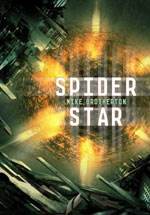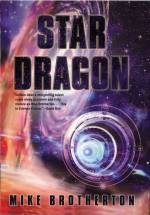Search
Your Tax Dollars at Work: Science Fiction Stories Online Inspired by Launch Pad
December 4th, 2010
I’ve been able to get funding from NASA and the National Science Foundation to support my efforts to educate and inspire through science fiction. One example is the anthology of astronomy-oriented short stories Diamonds in the Sky. Another is the Launch Pad Astronomy Workshop for Writers, which is a one week crash course in the summer that fills heads with astronomy.
The idea behind Launch Pad is that there will be more stories out there with astronomy featured, and that the astronomy will be more or less correct. It’s hard to quanitfy the impact, although I will be trying to do that in the future. Ideally one or more of the writers will hit it big with a movie or tv series that really gives astronomy the spotlight, reaching millions, teaching them things, and inspiring future scientists.
Anyway, I found out about two stories online this week I wanted to point out.
The first is by Launch Pad participant and Hugo-winning writer David Levine, featuring a mystery of astronomical proportions: Finding Joan.
Joan put a hand into the beam of her headlamp, carefully inspecting the white LED light on her pale, pale palm. Was it fading already? She checked her fanny pack to be sure she had a spare battery.
Sometimes she thought it would be easier to do her foraging during the day. But going out by night not only avoided the need for heavy protective clothing, it was less disturbing. At night she couldn’t see the roiling brown sky, or the blackened shells of burned-out buildings, or the bleached and crumbling remains of billboards and road signs…
The second is by new writer Dylan Fox who was inspired by Rachel Swirsky’s blogging of Launch Pad last summer. Check out Buckets of Light. It’s a story about black holes that explores the interplay between observation and theory and ends with a really cool image. Some discussion of the science issues on the comments section there, too, which could be quibbled about in some ways (e.g., some of the astronomer’s explanations to a child in the story).
Henry Maur’s job was to observe a black hole called ANZ-7461, and he kept a guilty secret.
ANZ-7461, being a black hole, couldn’t be observed directly. There was a red dwarf star called 2X4B-523-P orbiting it, and Henry could watch the plasma being sucked from the star into an accretion disk. He could take readings of the x-rays and gamma-rays coming form the space where ANZ-7461 was, and he could watch 2X4B-523-P appear to be warped, twisted and duplicated as it passed behind ANZ-7461…
You can follow any responses to this entry through the RSS 2.0 feed. You can leave a response, or trackback from your own site.


Wait. You got more funding for an SF project, or you’ve received funding in the past for Diamonds of the Skye? If yes to the former, I am totally going to try to write something for you…
Thanks for the link! Yeah, I messed the science a bit, but at least people were kind enough to correct me in the comments
SMD, no new funding at the moment. I might apply for more in the future, but I’m really slow with editing. Kind of like the writing… The funding just refers to the past funding for Diamonds and Launch Pad.
Dylan, live and learn. You got a lot right and care about getting it right. Keep that up!